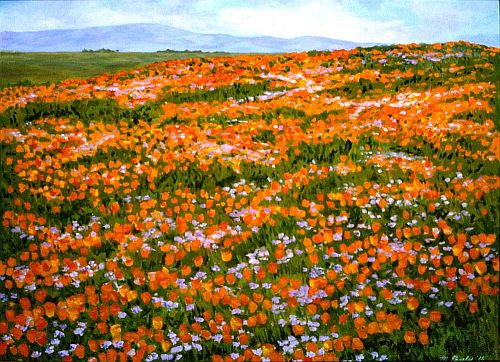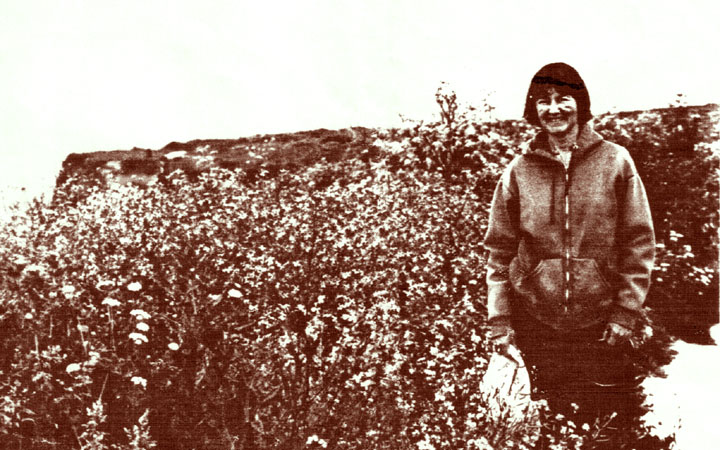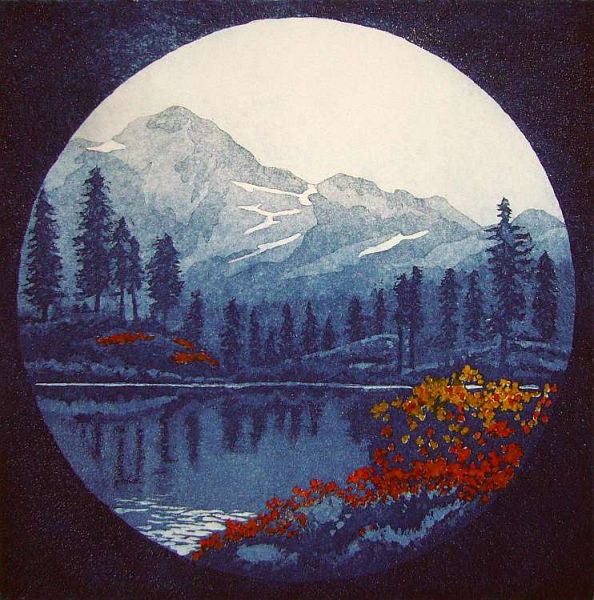home -
art gallery -
biography -
artist's statement -
links to related sites -
Email: wdreamb@yahoo.com
Artist's Statement
Marcia Pagels, 1992
I work mainly in acrylics, in style between impressionism and realism. Landscapes, particularly scenes with wildflowers, are usually my subject matter. The sense of joy that one feels as a part of nature is probably my "theme."
We each have memories of special places, views or natural occurrences that stand out in our recollections--memories that connect us to the natural world and give us a sense of oneness with the universe, the infinite.
 One of my earliest recollections is driving with my parents to the fields near Bakersfield to see the wildflowers in spring. As far as one could see, clear to the distant hazy blue mountains, there were miles and miles of bright orange poppies. Recently, my husband and I drove to Antelope Valley to see a small poppy preserve. I'm grateful it is there, but it was nothing like the vast expanse I saw as a child. My grandchildren will not have the privilege of seeing those fields stretching out for miles, except perhaps in my paintings. Much of the area where the poppies grew is now planted with cotton and other crops. These crops can grow there only with imported, subsidized water, and the soils, they say, are deteriorating. What is the value of a field of wildflowers? What is the value of the joy one feels at being a part of nature?
One of my earliest recollections is driving with my parents to the fields near Bakersfield to see the wildflowers in spring. As far as one could see, clear to the distant hazy blue mountains, there were miles and miles of bright orange poppies. Recently, my husband and I drove to Antelope Valley to see a small poppy preserve. I'm grateful it is there, but it was nothing like the vast expanse I saw as a child. My grandchildren will not have the privilege of seeing those fields stretching out for miles, except perhaps in my paintings. Much of the area where the poppies grew is now planted with cotton and other crops. These crops can grow there only with imported, subsidized water, and the soils, they say, are deteriorating. What is the value of a field of wildflowers? What is the value of the joy one feels at being a part of nature?
Until I was nine I lived in Taft, California, a small San Joaquin valley town. I vividly remember the hot summer nights when it was impossible to sleep in the house and my brother and I lay on a blanket spread out on the lawn. We looked up at the night sky, the arc of the Milky Way, and watched for shooting stars. I sensed that I was a part of a system so vast that it is beyond my comprehension. It was mysterious but glorious, and the memory will last my lifetime. City lights from our urban areas now dull our night skies over much of California. What is the value of a star-studded night sky?

Our elders understand even better than we the changes that are occuring. My mother, who is now over 90 years old, remembers what it was like in Alhambra, in the Los Angeles basin, where she lived as a girl. There was no smog in those days. Today, the Los Angeles basin is a bowl of smog, and Alhambra air is no longer healthful. Her lifetime represents technological and population changes that are truly astounding--the first cars, the telephone, the radio, airplanes, TV, and computers. Mechanized agriculture, mass use of pesticides, dams, skyscrapers. Along with these technological innovations, the population of the world has ballooned from being inconsequential and benign at one billion people to five and a half billion humans who today threaten the very habitability of the planet
For the last thirty years I have lived in the hills with a view of San Francisco Bay, a complexity of man's creation, buildings and bridges, and nature's own of hills, trees, animals and water. This place has special meaning for me. It is like the bed-rock, on which my life, my marriage and raising a family has taken place. When I return from a trip, I feel the rightness of being once again in this familiar place, of belonging in this particular landscape. Even were I to move for whatever reason, this place will always be a part of me.
Here too I am aware, however, of the tremendous changes technology and population have brought to the land and local ecosystem On the hills below me there were fields where once horses ran freely, not houses and freeways. I see highrise buildings where once there were none. The water we drink, once plentiful, is now controversial. How should it be divided up when there is not enough to meet the needs of a healthy bay and fishing industry, agriculture, industry, and domestic use?
We have reached a time of limits, but have failed to comprehend it, let alone deal with it We don't see an ozone hole, or hear the cry of a species dying, or notice a small change in the global temperature. Our biological response to danger--"fight or flight"--once served us well, but is no longer adequate. Now we must do what is infinitely harder--change our pattern of living, which will require a change of heart, mind, and daily behavior. The single most important thing we can do as individuals here in the U.S. to save the planet is to reduce our consumption of goods and conserve energy. It is not merely nostalgia for an earlier era that must guide our behaviour. It is a clear vision of the future we desire. Learning to live happily with less, we can live more lightly on the land.
 If we pay attention to our memories, or to the stories of our elders, we know we are a part of nature, not separated from it. Nature has the power to restore our spirits with its beauty and to give us that feeling of oneness with the universe. Attempting to recreate that feeling of oneness, joy in being a part of nature, is my aim in my paintings.
--Marcia Pagels, 1992
If we pay attention to our memories, or to the stories of our elders, we know we are a part of nature, not separated from it. Nature has the power to restore our spirits with its beauty and to give us that feeling of oneness with the universe. Attempting to recreate that feeling of oneness, joy in being a part of nature, is my aim in my paintings.
--Marcia Pagels, 1992

A human being is part of the whole called by us "Universe," a part limited in time and space. He experiences himself, his thoughts and feelings as something separated fmm the rest, a kind of optical delusion of his consciousness. This delusion is a kind of prison for us, restricting us to our personal desires and to affection for a few persons nearest to us. Our task must be to free ourselves from this prison by widening our circle of compassion to embrace all living creatures and the whole of nature in its beauty.
--Albert Einstein

home -
art gallery -
biography -
artist's statement -
links to related sites -
Email: wdreamb@yahoo.com
 One of my earliest recollections is driving with my parents to the fields near Bakersfield to see the wildflowers in spring. As far as one could see, clear to the distant hazy blue mountains, there were miles and miles of bright orange poppies. Recently, my husband and I drove to Antelope Valley to see a small poppy preserve. I'm grateful it is there, but it was nothing like the vast expanse I saw as a child. My grandchildren will not have the privilege of seeing those fields stretching out for miles, except perhaps in my paintings. Much of the area where the poppies grew is now planted with cotton and other crops. These crops can grow there only with imported, subsidized water, and the soils, they say, are deteriorating. What is the value of a field of wildflowers? What is the value of the joy one feels at being a part of nature?
One of my earliest recollections is driving with my parents to the fields near Bakersfield to see the wildflowers in spring. As far as one could see, clear to the distant hazy blue mountains, there were miles and miles of bright orange poppies. Recently, my husband and I drove to Antelope Valley to see a small poppy preserve. I'm grateful it is there, but it was nothing like the vast expanse I saw as a child. My grandchildren will not have the privilege of seeing those fields stretching out for miles, except perhaps in my paintings. Much of the area where the poppies grew is now planted with cotton and other crops. These crops can grow there only with imported, subsidized water, and the soils, they say, are deteriorating. What is the value of a field of wildflowers? What is the value of the joy one feels at being a part of nature?



